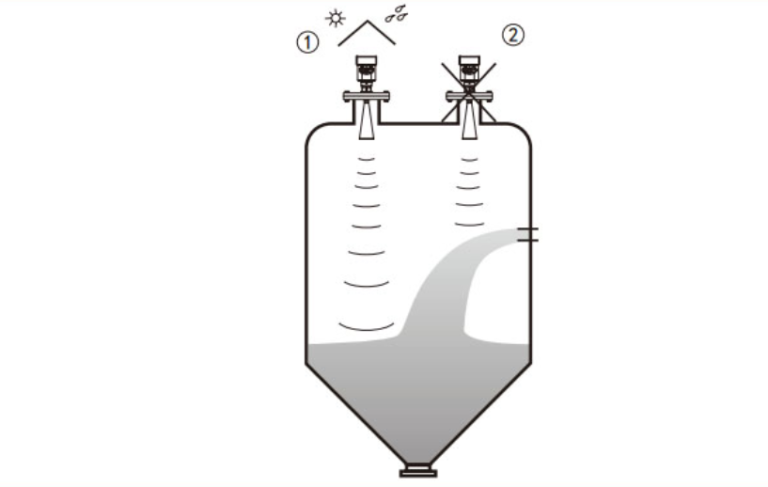Sulphuric acid is often seen in smelting production processes, and inevitably sulphuric acid storage tanks are also present. For this kind of working conditions, when installing a radar level meter, from which aspects to draw attention in order to ensure the accuracy of the measurement?
First of all, the radar level meter installed in the sulphuric acid storage tank, must ensure that the antenna and the liquid surface are vertical, and there should be a certain distance between the two, usually, the distance is not less than 5㎝.
The main reason for doing so is to prevent the liquid from sticking to the antenna, which will accumulate over time and affect the measurement effect, or even the situation that cannot be measured.
Secondly, the antenna of the radar level meter should be kept at a certain distance from the inner wall of the tank, and the radar level meter should not be installed above the inlet.

The distance between the radar level meter and the inner wall of the tank is too close, the interference signal generated by the tank wall can easily affect the measurement effect and even generate false echoes.
Installed above the feed opening, it is easy to measure the real liquid level, so it must be avoided.
Once again, if there is a stirring device in the sulphuric acid storage tank when the radar level meter is installed, try to avoid the vortex area formed when the stirring device is in operation so that the interference echoes generated by the stirring device do not affect the measurement effect. Only if the radar waves cannot reach the vortex area, there will be no interference echoes.
Finally, if the sulphuric acid storage tank needs to be fitted with limit switches and other ancillary equipment, the installation position needs to avoid the radar level meter beam range, so that the ancillary equipment cannot generate interference echoes and naturally cannot affect the measurement.
The stronger the echo signal of the radar level meter, the more accurate the measurement. Therefore, it is important to find a solution to the interference factors that affect the echo signal. If, at the time of installation, this cannot be avoided, then at the time of commissioning, ways must be found to solve the problem, for example by using the false echo storage function to eliminate the interference generated by false echoes.

The above radar level meter installation considerations are not only applicable to sulphuric acid storage tanks, but also to many other storage tanks.
Radar level meter selection is very important, in fact, radar level meter installation is also very important, directly related to the measurement effect. So the selection needs to pay attention, and the installation also needs to pay attention.
